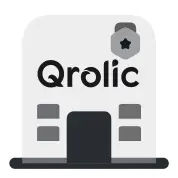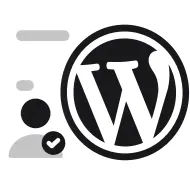Not sure how big your site should be? This guide helps you plan your sitemap like a pro.
When you’re planning a new website — whether it’s for your business, blog, or online store — one of the first questions that comes up is: “How many pages should my website have?”
The truth is, there’s no one-size-fits-all answer. The right number of pages depends on your goals, audience, and content strategy.
In this guide, we’ll break down how to plan your sitemap strategically — so you get a site that’s lean, effective, and built to grow.
Quick Summary:
- Page count depends on your goals and content.
- Every website needs 4-5 core essential pages.
- Add specific pages based on your business type.
- Focus on quality and purpose, not just quantity.
Table of Contents
- Not sure how big your site should be? This guide helps you plan your sitemap like a pro.
- 1. Why Page Count Matters
- 2. Understanding Website Goals
- 3. The Core Pages Every Website Needs
- 4. Additional Pages Based on Business Type
- 5. How to Plan a Smart Sitemap (Step-by-Step)
- Step 1: List All Content Ideas
- Step 2: Group Related Items
- Step 3: Define Your Navigation Levels
- Step 4: Prioritize for Launch
- Step 5: Visualize with a Wireframe
- 6. Signs Your Site Might Need More Pages
- 7. Signs Your Site Might Need Fewer Pages
- 8. SEO and User Experience Considerations
- 9. Final Thoughts & Call to Action
1. Why Page Count Matters
The number of pages on your website directly affects:
- User experience (UX) – Too few pages can confuse visitors; too many can overwhelm them.
- SEO performance – Each page is a ranking opportunity, but low-quality or duplicate pages can hurt your site.
- Maintenance load – More pages mean more work keeping content, links, and plugins updated.
- Conversion rates – Strategic, focused pages perform better than sprawling, unfocused sites.
Planning the right number of pages ensures your website feels complete — but not cluttered.
2. Understanding Website Goals
Before counting pages, clarify your primary goal. Ask yourself:
| Goal | Example | Suggested Focus |
|---|---|---|
| Lead Generation | Service business | Emphasize service detail pages + contact forms |
| eCommerce | Online store | Product categories, product detail, cart/checkout |
| Content & SEO | Blog, news site | Category hubs, author pages, structured blog archive |
| Portfolio | Agency or freelancer | Showcase work + testimonials, about page |
| Branding | Small business or startup | Simple landing-style pages for credibility |
Once you’re clear on your goal, you can plan a sitemap that fits your content purpose.
3. The Core Pages Every Website Needs
No matter your niche, every effective website should start with these foundational pages:
- Home Page – Your main entry point; highlights value and directs users to key areas.
- About Page – Builds trust; tells your story and why visitors should care.
- Services / Products Page – Explains what you offer and who it’s for.
- Contact Page – Makes it easy for people to reach you.
- Privacy Policy & Terms – Essential for compliance and user trust (especially if collecting data).
4. Additional Pages Based on Business Type
Different industries require unique content structures. Here’s how to expand smartly:
| Business Type | Recommended Additional Pages |
|---|---|
| eCommerce | Product categories, product detail pages, cart, checkout, return policy |
| Agency / Service Business | Case studies, portfolio, testimonials, FAQs, pricing |
| Educational / Training | Courses, syllabus, instructor bios, resources, enrollment form |
| Healthcare | Doctors, specialties, patient forms, insurance info |
| Real Estate | Listings, location pages, agents, property detail |
| Hospitality / Travel | Rooms, destinations, booking, gallery, reviews |
5. How to Plan a Smart Sitemap (Step-by-Step)
Here’s a proven method our WordPress experts at Qrolic Technologies use to plan site structures:
Step 1: List All Content Ideas
Brainstorm everything you might include — pages, posts, categories, landing pages.
Step 2: Group Related Items
Combine similar pages (e.g., “About” and “Our Team” could be one page if content is short).
Step 3: Define Your Navigation Levels
Keep top-level menus simple (5–7 items max). Use dropdowns for secondary pages.
Step 4: Prioritize for Launch
Don’t build everything at once. Start with your essentials, then expand after launch.
Example: Launch with 6 key pages → Add blog and resources later.
Step 5: Visualize with a Wireframe
Before you commit, map your layout visually. (We even offer a Free Wireframe Preview so you can see your layout before building.)
6. Signs Your Site Might Need More Pages
- You offer multiple distinct services or products.
- You’re targeting several keywords for SEO.
- You have too much content crammed into one page.
- Your analytics show users can’t find what they need.
7. Signs Your Site Might Need Fewer Pages
- Visitors bounce quickly (too much clicking required).
- Pages have thin or duplicate content.
- You struggle to maintain or update everything.
- The navigation feels crowded.
8. SEO and User Experience Considerations
- Each page should target a unique keyword theme.
(Example: “wordpress Optimization” vs “Website Speed Audit.”) - Avoid orphan pages – make sure every page links to at least one other.
- Use clear internal links to guide users (e.g., from Service → Case Study → Contact).
- Don’t create pages just for SEO; quality trumps quantity.
Remember: It’s better to have 10 excellent, optimized pages than 100 thin ones.
9. Final Thoughts & Call to Action
When planning your website, think strategy over size.
Each page should have a clear purpose — to inform, inspire, or convert.
At Qrolic Technologies, we help businesses of all sizes plan, design, and manage their WordPress websites efficiently.
Whether you’re building a 5-page portfolio or a 200-page content hub, we’ll help you plan your sitemap like a pro.
Want expert help planning your site?
Get your Free Wireframe Preview today — no commitment, no upfront fee.
Contact Qrolic Technologies






